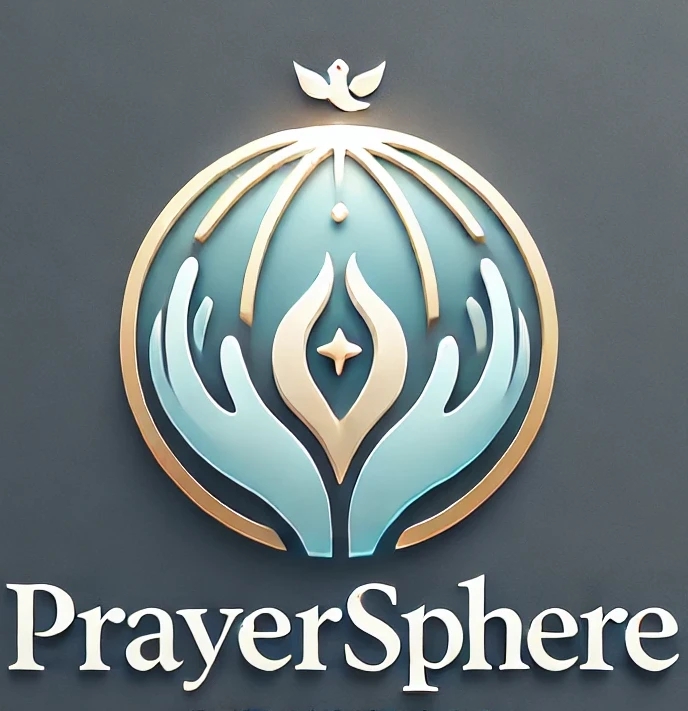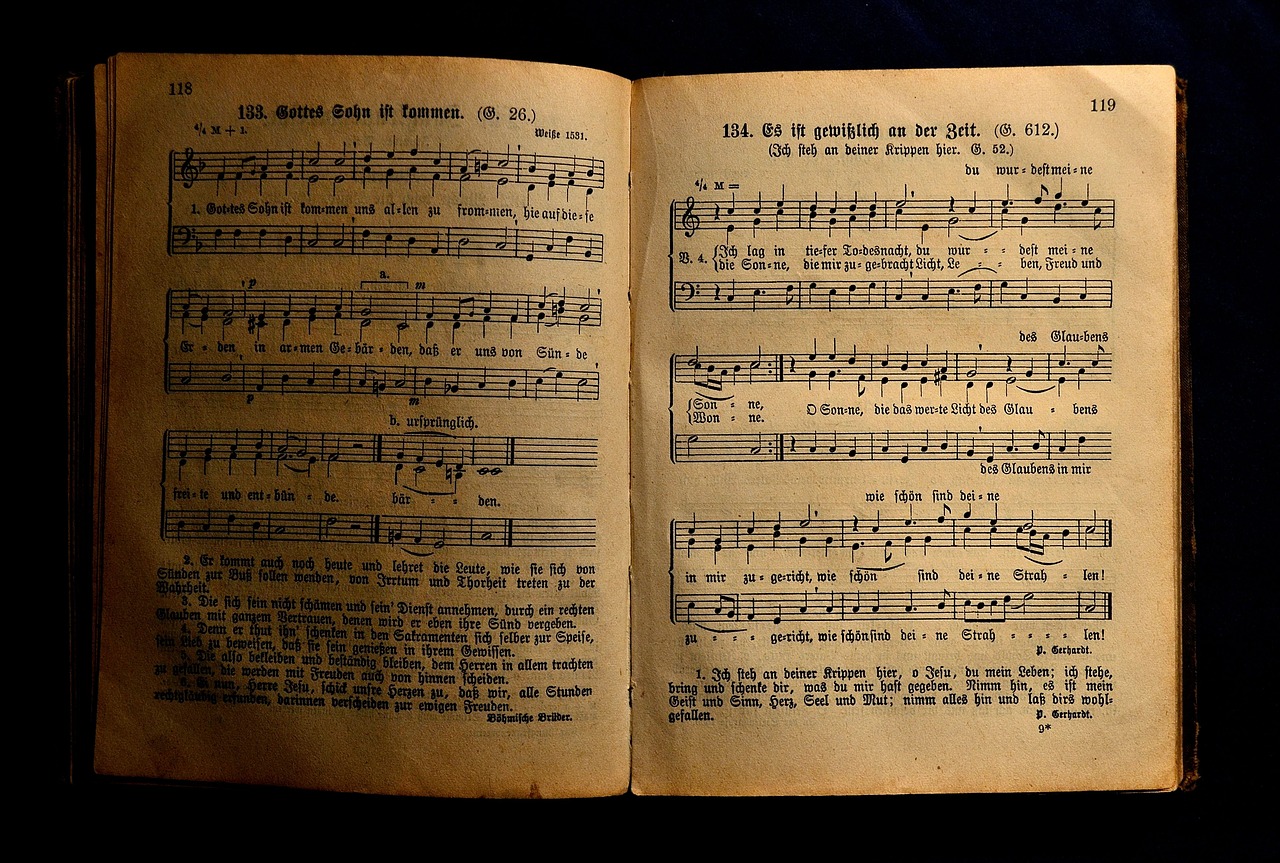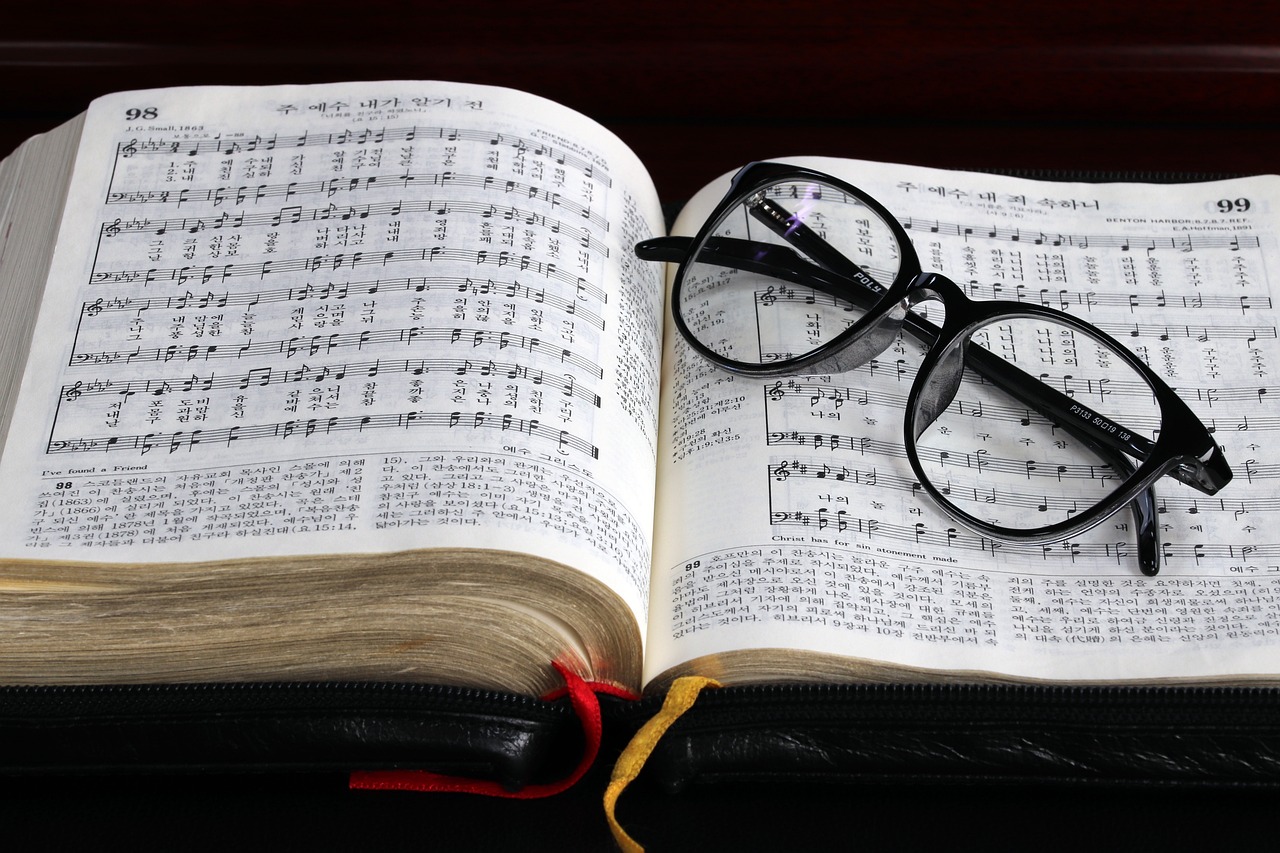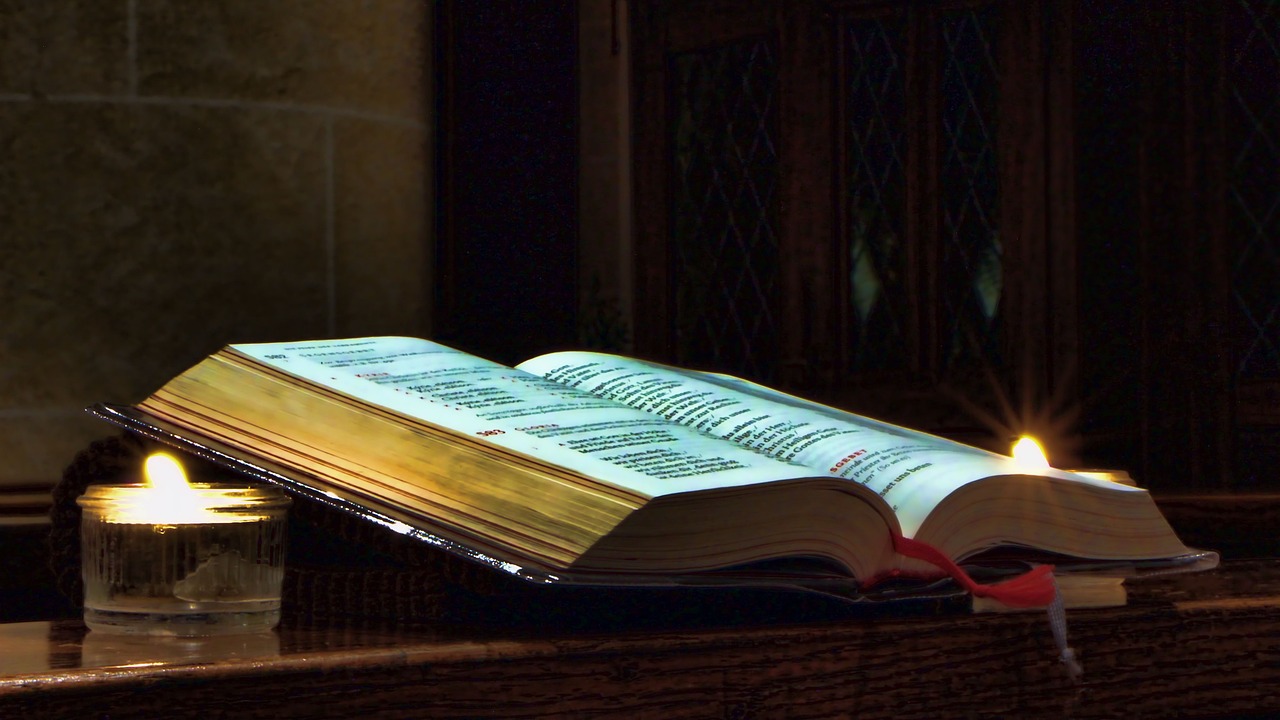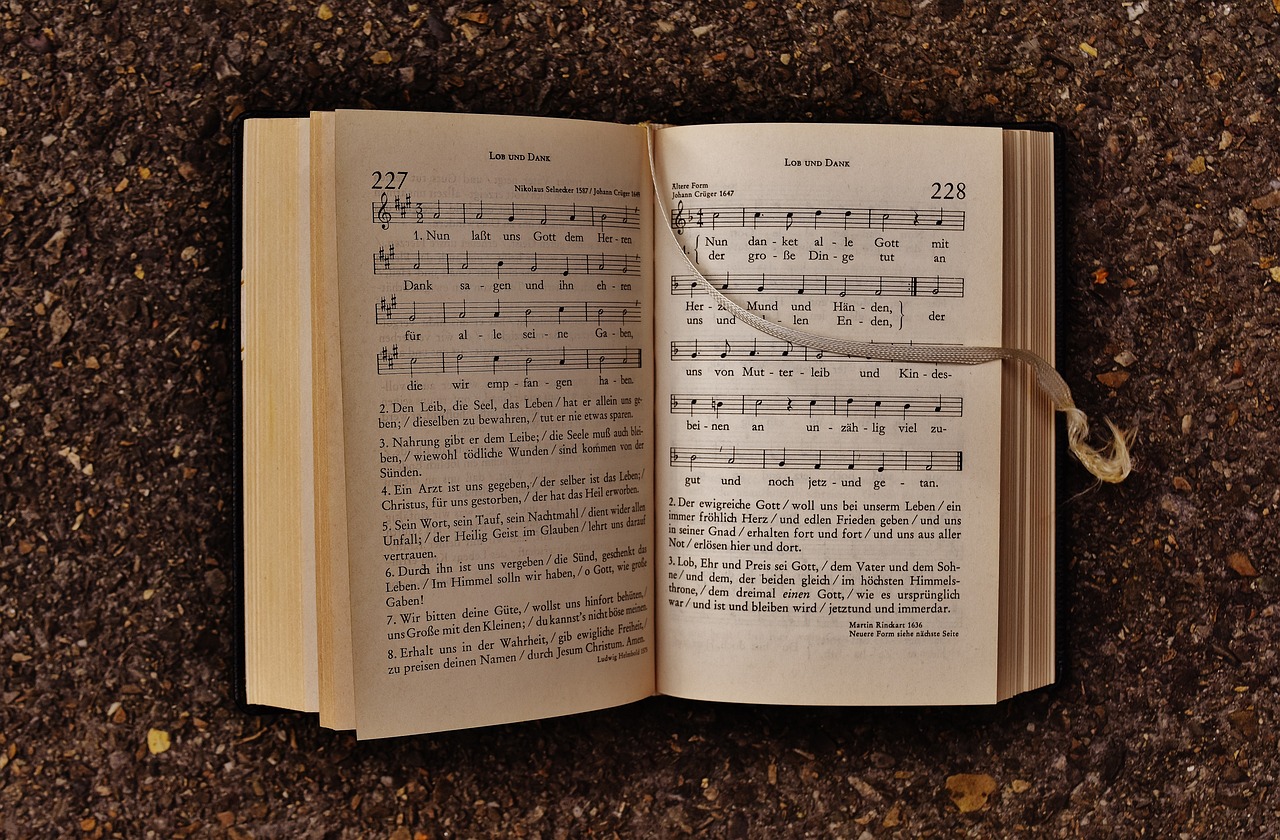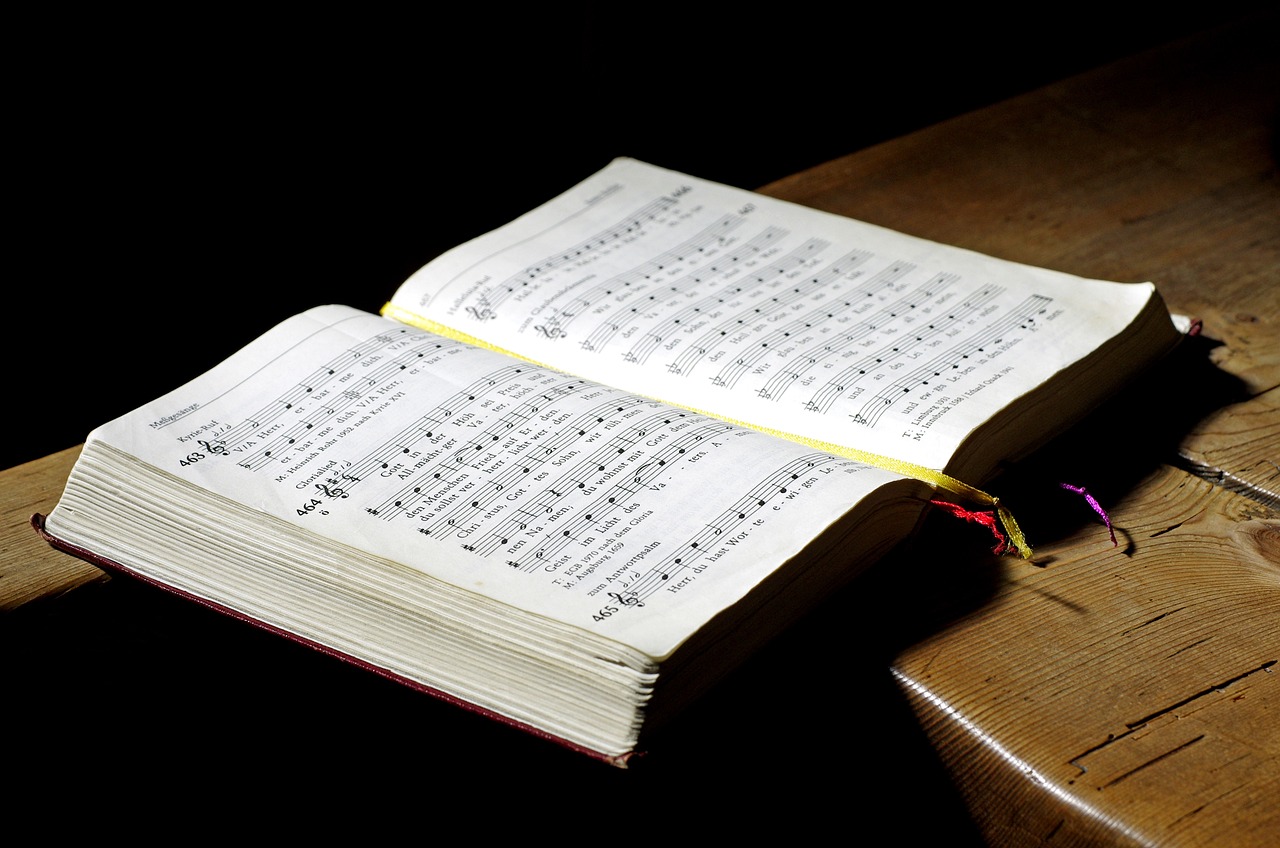So loved He the world that He gave us His Son,
Who yielded His life our redemption to win,
And opened the life-gate that all may go in.
Let the earth hear His voice;
Praise the Lord, praise the Lord,
Let the people rejoice;
Oh, come to the Father, through Jesus the Son,
And give Him the glory; great things He hath done.
To every believer the promise of God;
The vilest offender who truly believes,
That moment from Jesus a pardon receives.
And great our rejoicing through Jesus the Son;
But purer, and higher, and greater will be
Our wonder, our transport when Jesus we see.
“To God Be the Glory” – A Hymn of Praise and Celebration
“To God Be the Glory” is one of the most well-known and beloved hymns in the Christian faith, composed by Fanny J. Crosby in 1875 with music by William H. Doane. This hymn has stood the test of time, finding its way into many hymnals and worship services worldwide. Known for its triumphant and celebratory tone, the hymn has become a staple in both traditional and contemporary worship settings.
Background and Creation
“To God Be the Glory” was written in the context of the 19th-century evangelical revival movement in the United States. The period was marked by a strong emphasis on personal faith and a deep desire to give thanks to God for His works. Crosby, who was known for her prolific hymn writing, was a key figure during this time, composing over 8,000 hymns throughout her lifetime.
Fanny J. Crosby, though blind from infancy, wrote lyrics that were vivid and rich with emotion. She was renowned for her ability to craft songs that inspired hope, faith, and gratitude. “To God Be the Glory” was one of her most popular hymns, and it is often considered a reflection of her deep relationship with God.
William H. Doane, a renowned composer and musician, provided the music for the hymn. Doane had worked with Crosby on many hymns, and together they created melodies that matched the heartfelt nature of her lyrics. The tune for “To God Be the Glory” is bright, upbeat, and anthemic, matching the hymn’s theme of celebrating God’s greatness.
Themes and Musical Features
The central theme of “To God Be the Glory” is praise to God for His mighty acts, particularly the sacrifice of Jesus Christ and the redemption of humanity. The hymn is structured in a way that invites both personal reflection and collective praise. The melody’s joyful and triumphant tone mirrors the words of the lyrics, creating an uplifting atmosphere during worship.
The hymn follows a traditional verse-chorus structure, with each verse building upon the idea of God’s greatness and each chorus reinforcing the call to praise. The music is characterized by a strong, steady rhythm that encourages congregational participation and enhances the hymn’s anthemic quality. This accessibility has contributed to the hymn’s widespread popularity in church services, revivals, and gatherings.
Historical Context
“To God Be the Glory” was written during a period of social and religious transformation. The late 19th century saw a flourishing of hymn writing, as well as a strong emphasis on the power of music to convey messages of faith and hope. The song became particularly popular in evangelical circles, where it was used during revival meetings and evangelistic campaigns to inspire congregations and celebrate the greatness of God.
At the time, the hymn was also a reflection of the deep sense of optimism that characterized the era. It was a time when many Christians believed in the transformative power of the Gospel and sought to share the good news with the world. The hymn’s triumphant and victorious tone captured this spirit of enthusiasm and mission.
The Influence of Fanny J. Crosby
Fanny J. Crosby (1820–1915) is one of the most significant hymn writers in Christian history, and “To God Be the Glory” is one of her most famous works. Despite losing her sight shortly after birth, Crosby wrote hymns that continue to impact millions of people. Her ability to craft deeply spiritual and poetic lyrics was widely recognized, and she often drew on her own experiences of faith and dependence on God.
Crosby’s hymns were central to the worship life of many Christian communities in the 19th and early 20th centuries. Her works reflect a deep personal devotion to God, and her words have been a source of comfort and encouragement for generations of believers. “To God Be the Glory” remains one of her most enduring legacies, demonstrating her ability to communicate both the majesty of God and the personal connection believers can have with Him.
Cultural Impact and Legacy
Since its composition, “To God Be the Glory” has remained a favorite hymn in churches worldwide. It has been sung in various settings, from large congregational worship services to intimate gatherings, and has been recorded by numerous artists in different musical styles. The hymn’s message of praise and celebration has allowed it to transcend time and remain relevant for modern audiences.
The song’s widespread use can be seen in its inclusion in hymnals across denominations and its frequent performance during significant religious events, including national and international gatherings. Its anthemic nature makes it a popular choice for choirs and congregational singing, and it is frequently performed in both traditional and contemporary worship contexts.
Conclusion
“To God Be the Glory” is a timeless hymn that continues to inspire and uplift Christians around the world. Written by Fanny J. Crosby and set to music by William H. Doane, the hymn is a vibrant declaration of praise and gratitude to God for His works. With its joyful melody, compelling lyrics, and emphasis on the greatness of God, the hymn remains a central piece of worship in many Christian traditions.
The legacy of “To God Be the Glory” lies not only in its musical and lyrical qualities but also in its ability to unite believers in a shared expression of praise. The hymn’s enduring popularity and influence are a testament to the power of music to communicate the deepest truths of the Christian faith and to the lasting impact of Fanny J. Crosby’s contribution to sacred music.
The Meaning of “To God Be the Glory”
“To God Be the Glory” is a hymn of praise and celebration, emphasizing the greatness and majesty of God. Written by Fanny J. Crosby in 1875, with music by William H. Doane, it centers on the belief that all glory and honor belong to God for His divine works, especially the gift of salvation through Jesus Christ.
Here’s a breakdown of its key meanings:
1. Praise for God’s Greatness and Glory
The opening line, “To God be the glory, great things He hath done,” sets the tone for the entire hymn. It acknowledges that all glory belongs to God for His mighty works. The “great things” refer to God’s acts of salvation, His creation, and His continuous care for humanity. The hymn reminds believers that the focus of worship is on God, not on human achievement, and that He alone deserves praise for everything that is good.
2. Celebration of the Gift of Salvation
The second line, “So loved He the world that He gave us His Son,” is a direct reference to John 3:16 and highlights the sacrificial love of God in giving Jesus Christ as the means of salvation for the world. The hymn focuses on God’s mercy and the ultimate act of love: the giving of His Son to atone for humanity’s sins.
3. Acknowledgment of Jesus’ Sacrifice
The phrase, “Who yielded His life an atonement for sin,” reflects the core of the Christian faith—the belief that Jesus Christ sacrificed Himself to bring about reconciliation between humanity and God. This line emphasizes the redemption that believers experience through Jesus’ death on the cross and His victory over sin.
4. Call to Praise and Rejoice
The repeated refrain, “Praise the Lord, praise the Lord, let the earth hear His voice!” is a call to all creation to join in the act of worship. It encourages everyone, from individuals to entire nations, to lift their voices in praise to God for His incredible works. This line expresses a universal invitation to praise, celebrating that God’s glory is worthy of recognition by all people, everywhere.
5. Gratitude and Worship
Throughout the hymn, there is an overarching message of worship and gratitude. “O come to the Father, through Jesus the Son, and give Him the glory, great things He hath done!” This final plea emphasizes that all glory and praise are directed to God the Father, through Jesus Christ the Son, for the incredible gift of salvation. It reflects the Christian understanding that Jesus is the way to the Father and that worship flows through this relationship.
Conclusion
“To God Be the Glory” is a hymn of adoration, joy, and gratitude. It acknowledges God’s greatness, celebrates the gift of salvation through Jesus Christ, and calls all of creation to join in praising Him. Its message is simple yet profound: all glory belongs to God for the great things He has done, and believers are invited to offer praise and worship in response to His incredible love and grace.
